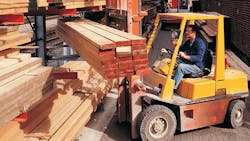Make Your Move: Materials Sector Builds on Construction Recovery
Major sectors of the U.S. economy are positive. The housing market is positive and generating jobs. Annual retail sales (excluding automobiles) are at record highs and employment is improving, albeit at a slow pace. The improving employment picture and low interest rates have pushed automobile sales higher, a trend that we expect will continue through the end of the year. IndustryWeek readers should find confidence in these signals. Combined with the leading indicators, these sectors confirm our outlook for growth in the U.S. through the remainder of 2013. We at ITR Economics expect that the rate of growth in the U.S. economy will slow as we progress into 2014. This slower growth will lead to a mild downturn later in 2014.
See Also: Global Manufacturing Economy Trends & Analysis
Housing construction has been a key component to economic growth in 2013. Housing starts through July are 27.1% higher than a year ago. The growth in housing construction has pushed sales and production for many building materials higher this year. The annual wholesale trade of lumber and other construction materials reached a four-and-a-half-year high of $118.3 billion in July. Meanwhile, annual plumbing fixture production through July is 9.6% higher than last year. Annual lime and gypsum production is up 4.5% from last year on an annual basis, while veneer and plywood production also gained 4.5% over the past 12 months. The production of glass and glass products has not shared in this prosperity, however, with annual production 1.6% lower than last year.
We expect housing construction activity to remain positive through year end, supporting further gains in materials production and sales. However, the rate of growth in this industry is cooling off, and the level of demand on materials will ease noticeably as we traverse the rest of the year. We are forecasting a mild decline in housing construction in 2014. While this decline in activity will pale in comparison to the housing downturn during the Great Recession, it will lead to reduced demand for construction materials. The good news is that a reduction in the demand pull will keep material prices stable in 2014.
The growth in nonresidential construction has slowed over the last year and is just 0.8% above last year. This weakening, however, masks the underlying trends in certain sectors within the industry. Annual commercial construction is 2.3% higher than one year ago, fueled by a rising trend in office construction, while industrial construction is 5.4% above last year. Education construction, which is 5.6% below last year, has been led lower by falling enrollments and endowments.
Despite the mixed numbers in nonresidential construction, the production of structural metal products, which are mainly used in nonresidential applications, is 7.3% above last year (annual basis). We expect office construction, and commercial construction as a whole, to post slower growth as 2013 comes to an end, and education construction to contract further. This will weaken the demand for materials directly related to nonresidential construction. We expect that the growth in office construction will slow in 2014 from its current double-digit pace.
Synthetic Materials Will Grow Through 2013
Like construction materials, the synthetic materials industry has been able to capitalize on recent economic growth, particularly higher levels of automobile production as well as a nascent recovery in Europe. Artificial and synthetic fibers (3.4%), plastic material and resin production (3.8%), synthetic dyes and pigments (8.3%), and synthetic rubber (15.7%) are all above year-ago levels on an annual basis. Growth in the production of automobiles in North America will slow in the coming months, but manufacturing activity will remain high enough to be supportive of further growth in the production of synthetic materials through the end of the year. Expect a relatively mild recession to characterize automobile production in 2014, with a resultant reduction in demand for synthetic materials.
Low natural gas prices have been supportive of a slight rising trend in chemical products and materials production. Through July, the Chemical Production Index is 0.5% higher than a year ago (annual basis), and internal data suggests that the rising trend will continue into 2014. Natural gas prices are expected to increase slightly between now and the end of 2013, but still remain low by historical standards and thus supportive of increased chemical production. So too will increased economic growth in China and Europe. Our outlook for the U.S. and the rest of the world for 2014 suggests that chemical production will essentially plateau in the second half of the year.
Slower growth in 2014 does not mean you should slow down your planning and implementation of growth strategies. Use 2014 to beef up sales procedures, add key people to penetrate markets, generate new business and streamline your operations to increase efficiencies. These will guide you through the mild slowdown next year, and prepare you for growth in 2015 and beyond.
Contributing Editor Alan Beaulieu is an economist and president of ITR (itreconomics.com). He is co-author, with his brother Brian, of "Make Your Move," a book on spotting business-cycle trends.
